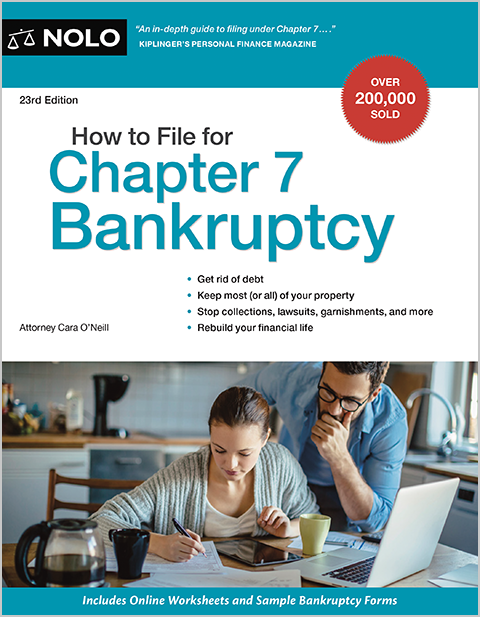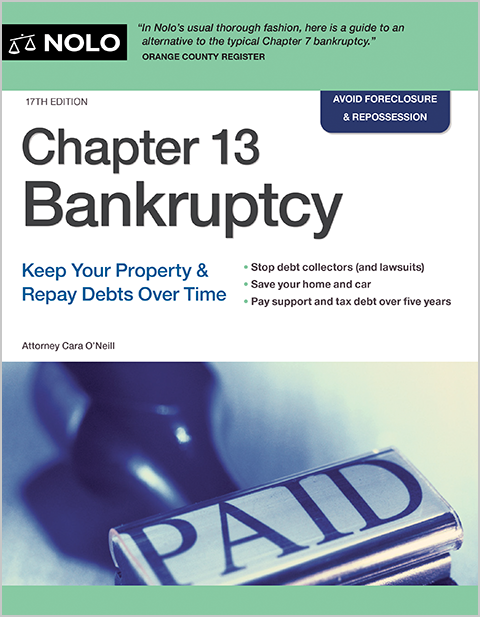Learn how fast you can file for bankruptcy using a skeleton filing.
An emergency bankruptcy filing can stop foreclosure, repossession, wage garnishment, or a lawsuit. It's a bare-bones bankruptcy or "skeleton bankruptcy filing," which can help you file quickly and stop the problem in its tracks. This article explains the streamlined bankruptcy filing process that lessens the time needed to prepare a bankruptcy petition.
Fast Bankruptcies Filed Online—How a Skeleton Filing Can Help
The shortened process known as an emergency or skeleton filing allows you to start a bankruptcy case by submitting an incomplete, bare-bones bankruptcy filing. Once prepared, your attorney can file it online in minutes.
A specific emergency isn't required for a skeleton filing. Anyone who needs to file quickly to prevent an unwanted event from happening can use the process. Common reasons people use the emergency procedure include:
- home foreclosure
- eviction
- repossession of a vehicle
- withdrawal of money from a paycheck (wage garnishment), or
- legal action, such as a deposition or trial.
How an Emergency Bankruptcy Chapter Filing Can Help
After filing, the automatic stay stops these types of issues immediately. However, keep in mind that the relief might be temporary and that not all bankruptcy chapters will solve every problem. Understanding the differences between Chapter 7 and Chapter 13 bankruptcy will help you determine which chapter will best meet your needs.
Skeleton Filing Requirements
The average bankruptcy petition is over 50 pages in length. However, when you use a skeleton filing, you aren't required to include all bankruptcy schedules. Here's what you should be prepared to file and pay:
- Voluntary Petition for Individuals Filing for Bankruptcy (Form 101)
- Your Statement About Your Social Security Numbers (Form B121)
- the names and addresses of all of your creditors (known as a creditor mailing list or mailing matrix—check with your court for formatting requirements)
- a credit counseling certificate requirement or a waiver request, and
- a filing fee, a request for a fee waiver, or a request to pay the fee in installments.
A business will use non-individual forms. You can find the official bankruptcy forms on the U.S. Courts website.
Finishing Up a Quick Bankruptcy Filing
The skeleton process buys you time—but that's it. You must submit the remaining forms within 14 days. The court will likely notify you about the deadline in writing.
A completed packet will contain information about every aspect of the debtor's financial situation, including the following:
- creditors and debt
- income and expenses
- assets, such as investment accounts, real estate, and other property
- up to ten years' worth of prior financial transactions, and
- additional information, such as a statement verifying that the debtor took the required credit counseling course.
It's important to remember that if you don't meet the filing deadline, the court will dismiss the case and possibly issue sanctions if it suspects an abuse of the bankruptcy process. You can learn more about the process by reading Emergency Bankruptcy Filing.
Need More Bankruptcy Help?
Did you know Nolo has made the law accessible for over fifty years? It's true, and we want to ensure you find what you need. Below, you'll find more articles explaining how bankruptcy works. And don't forget that our bankruptcy homepage is the best place to start if you have other questions!
|
Our Editor's Picks for You |
|
|
More Like This |
An Overview of Chapter 7 Bankruptcy |
|
Consider Before Filing Bankruptcy |
Which Debts Can You Discharge in Chapter 7 Bankruptcy? Can You File Bankruptcy on a Car Loan and Keep the Car? Can I Run Up My Credit Card Balances Before I File Bankruptcy? |
|
Helpful Bankruptcy Sites |
We wholeheartedly encourage research and learning, but online articles can't address all bankruptcy issues or the facts of your case. The best way to protect your assets in bankruptcy is by hiring a local bankruptcy lawyer.

